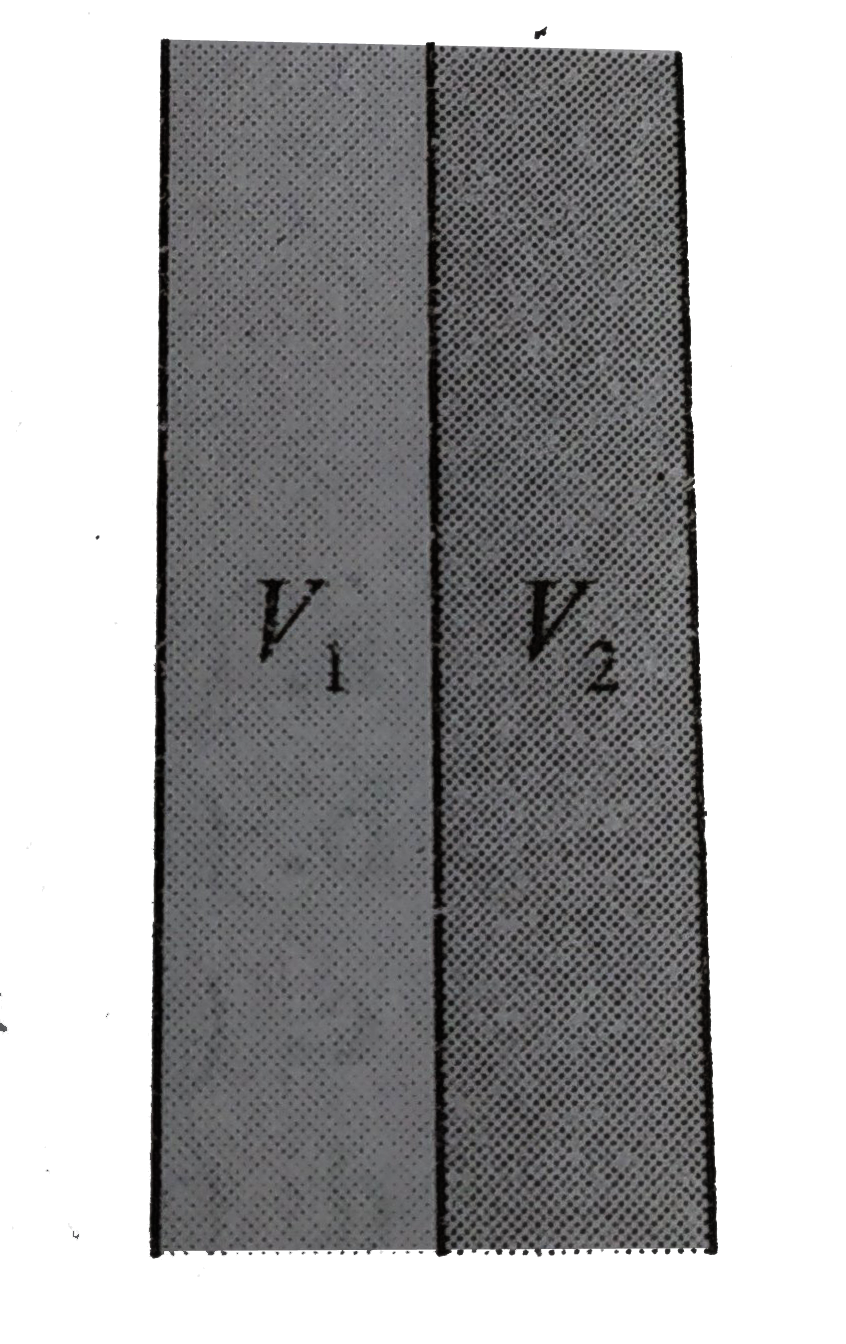The ionisation potential of mercury is 10.39 V. How far an electron must travel in an electric field of 1.5×106V/m to gain sufficient energy to ionise mercury ?
10.391.6×10−19 m
10.392×1.6×10−19 m
10.39×1.6×10−19 m
10.391.5×106 m
The correct Answer is:D
To find out how far an electron must travel in an electric field to gain sufficient energy to ionize mercury, we can follow these steps:
Step 1: Understand the Ionization Potential
The ionization potential (IP) of mercury is given as 10.39 V. This means that to ionize a mercury atom, an electron must gain at least 10.39 joules of energy per coulomb of charge.
Step 2: Calculate the Work Required
The work done (W) to ionize mercury can be expressed in terms of the ionization potential:
W=e×IP
where e is the charge of an electron, approximately 1.6×10−19 C.
Step 3: Calculate the Work Done
Substituting the values:
W=(1.6×10−19C)×(10.39V)
W=1.66×10−18J
Step 4: Relate Work Done to Electric Field
The work done by the electric field (E) when an electron moves a distance d in an electric field E is given by:
W=e×E×d
Step 5: Set the Two Expressions for Work Equal
Since the work done to ionize mercury must equal the work done by the electric field, we can set the two expressions equal to each other:
e×IP=e×E×d
Step 6: Cancel the Charge of the Electron
We can cancel e from both sides (as long as e≠0):
IP=E×d
Step 7: Solve for Distance d
Rearranging the equation to solve for d:
d=IPE
Step 8: Substitute the Values
Now substitute the known values:
- IP=10.39V
- E=1.5×106V/m
So,
d=10.39V1.5×106V/m
Step 9: Calculate d
Calculating the distance:
d=10.391.5×106
d≈6.93×10−6m
d≈6.93μm
Final Answer
The distance the electron must travel in the electric field to gain sufficient energy to ionize mercury is approximately 6.93μm.
---
The ionization potential (IP) of mercury is given as 10.39 V. This means that to ionize a mercury atom, an electron must gain at least 10.39 joules of energy per coulomb of charge.
The work done (W) to ionize mercury can be expressed in terms of the ionization potential:
W=e×IP
where e is the charge of an electron, approximately 1.6×10−19 C.
Substituting the values:
W=(1.6×10−19C)×(10.39V)
W=1.66×10−18J
The work done by the electric field (E) when an electron moves a distance d in an electric field E is given by:
W=e×E×d
Since the work done to ionize mercury must equal the work done by the electric field, we can set the two expressions equal to each other:
e×IP=e×E×d
We can cancel e from both sides (as long as e≠0):
IP=E×d
Rearranging the equation to solve for d:
d=IPE
Now substitute the known values:
- IP=10.39V
- E=1.5×106V/m
d=10.39V1.5×106V/m
Calculating the distance:
d=10.391.5×106
d≈6.93×10−6m
d≈6.93μm
The distance the electron must travel in the electric field to gain sufficient energy to ionize mercury is approximately 6.93μm.
Topper's Solved these Questions
- ELECTROSTATIC POTENTIAL AND CAPACITORSBOOK - DC PANDEY ENGLISHCHAPTER - ELECTROSTATIC POTENTIAL AND CAPACITORSEXERCISE - (B) Chapter exercises
17 Videos
- ELECTROSTATIC POTENTIAL AND CAPACITORSBOOK - DC PANDEY ENGLISHCHAPTER - ELECTROSTATIC POTENTIAL AND CAPACITORSEXERCISE - (C) Chapter exercises
50 Videos
- ELECTROSTATIC POTENTIAL AND CAPACITORSBOOK - DC PANDEY ENGLISHCHAPTER - ELECTROSTATIC POTENTIAL AND CAPACITORSEXERCISE - Check point 2.5
20 Videos
- ELECTROMAGNETIC WAVESBOOK - DC PANDEY ENGLISHCHAPTER - ELECTROMAGNETIC WAVESEXERCISE - Sec C
22 Videos
- ELECTROSTATICSBOOK - DC PANDEY ENGLISHCHAPTER - ELECTROSTATICSEXERCISE - Medical entrances gallery
37 Videos
Similar Questions
The first ionisation potential of Na is 5.1eV. The value of electron gain enthalpy of Na+ will be
View SolutionA particle of mass 2×10−3 kg, charge 4×10−3C enters in an electric field of 5V/m, then its kinetic energy after 10 s is
View SolutionA zener diode has a contact potential of 1 V in the absence of biasing. It undergoes Zener breakdown for an electric field of 106 V/m at the depletion region of p-n junction. If the width of the depletion region is 2.5 μm, what should be the reverse biased potential for the Zener breakdown to occur ?
View SolutionA charged particle having drift velocity of 7.5 x 10−4ms in an electric field of 3 x 10−10Vm has a mobility in m2V−1s−1
View SolutionAn α particle is placed in an electric field at a point having electric potential 5V. Find its potential energy ?
View SolutionThe distnace between the plates of a parallel plate capacitor is 3 mm the potential difference applied is 3×105 V. If an electron travels from one plate to another the change in its potential energy is
View SolutionAn electron traveling in a uniform electric field passes from a region of potential V1 to a region of higher potential V2. Then

View SolutionA glass vessel of volume 100cm3 is filled with mercury and is heated from 25∘C→75∘C. What volume of mercury will overflow? Coefficient of linear expansion of glass =1.8×10−6/'∘C and coefficeient of volume expansion of mercury is 1.8×10−4/'∘C.
View SolutionAn electron with a speed 5.00×106 m/s enters an electric field of magnitude 103 N/C, travelling along the field lies in the direction that retards its motion.
a. How far will the electron travel in the field before stopping momentarily?
b. How much time will have elapsed?
c. If the regin with the electric field is only 8.00 mm long (too short from the electronn to stop with in it), what fraction of the elctron's initial kinetic energy wil be lost in that region.
View SolutionThe ionisation constant of dimethylamine is 5.4×10−4 Calculate its degree of ionisation in its 0.02 M solution. What percentage of dimethylamine is ionised if the solution is also 0.1 M in NaOH ?
View Solution
